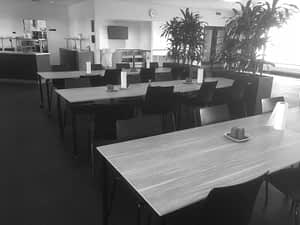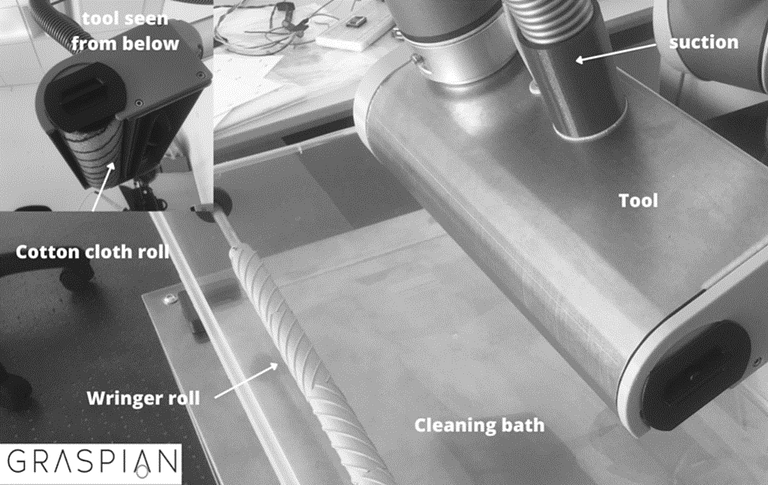Background
Cleaning in office areas and public buildings requires many hours of manual labor every day. This kind of work is an example of repetitive work that often requires awkward work positions and therefore wear down the cleaning staff. On the other hand, it is difficult to automate the cleaning tasks because the environment is unknown and constantly changes.
Many different types of substances must be cleaned, including solid particles (like coffee grains), liquids (like brewed coffee) and larger object (like peas). Also, furniture is moved around by the users from day to day and objects like cups, papers, and computer equipment are randomly placed on the tables.
The project “FacilityCobot Automating Facility Management by Collaborative Robots guided by Intelligent Sensors” funded by the Innovation Fund Denmark aimed at developing a facility cleaning cobot that could clean table surfaces in a canteen. The partners in the project were University of Southern Denmark, Enabled Robotics, UbiqiSense, K-Jacobsen A/S, ISS Facility Services A/S and SIGNAL ARKITEKTER ApS.
Enabled Robotics acted as system integrator in the project. The system consists of an ER-FLEX mobile cobot from Enabled Robotics including a UR5 arm from Universal Robots equipped with an end-of-arm tool for cleaning surfaces. Ubiqisense delivered room sensors that could locate the position of furniture in the room and feed that information to the cobot.



